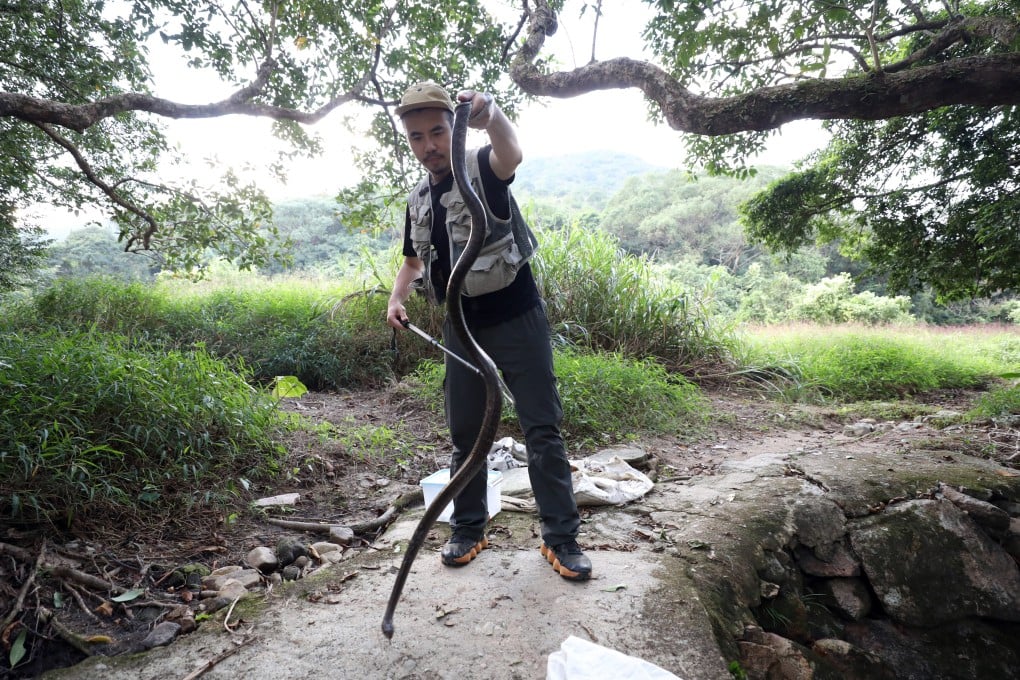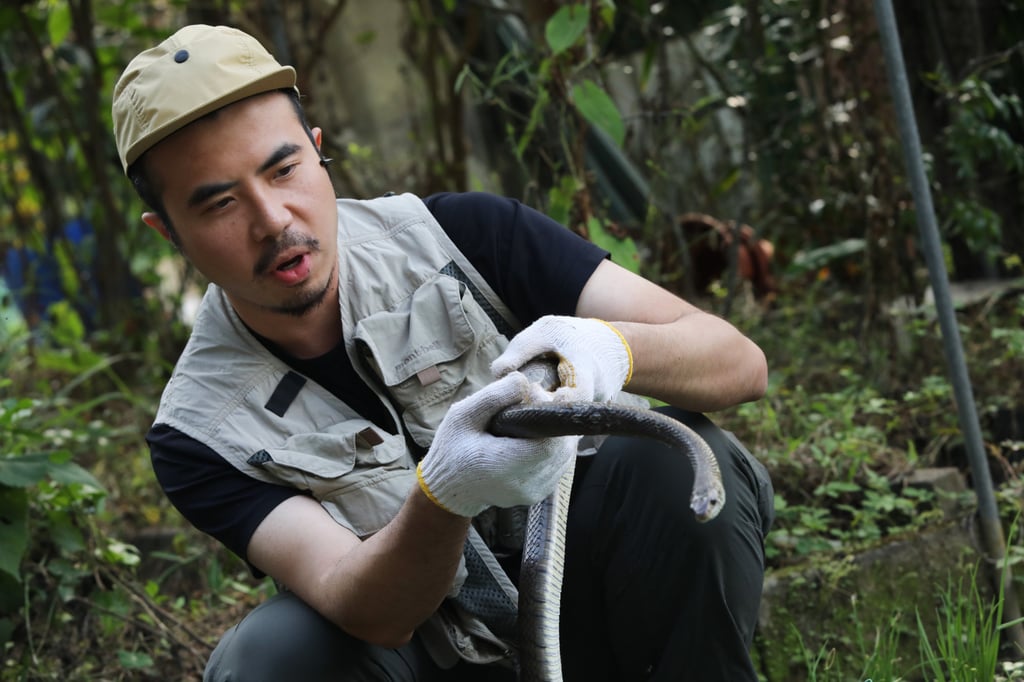How Hong Kong’s new breed of ‘snake kings’ are defanging a cruel practice
- For years, reptiles that slithered too close to humans would be delivered by ‘snake king’ catchers to authorities and might languish in boxes for days
- But a new type of licensed catcher is putting snakes back into the wild almost right away as city moves further away from tossing them into soup pots

Crouching low in the mud, Hongkonger Ivan Li Yat-long did not flinch as the 1.6-metre (5.2 foot) common rat snake coiled around his arm, its grip tightening.
“I never get nervous, I love it,” he said, after cutting the reptile free from the net in which it was entangled on a farm in Yuen Long in the New Territories.
The 33-year-old seh wong – a Cantonese term for snake catcher which translates as “snake king” – bagged the reptile before driving to a nearby country park and releasing it there.

He is one of four people licensed under a recent policy change to catch snakes that give people a fright and release them into the wild. Previously, police had to deliver the reptiles to the Kadoorie Farm and Botanic Garden, which would release them after a health check.
Under the “rapid release” change which came into effect in October, qualified snake catchers respond to sightings and release those they catch into the wild themselves.

Experts have welcomed the change, saying it not only increases chances of survival, but also helps to weed out snake catchers who use cruel methods.
